Motoblocks with a trailer: rules of use, types and selection
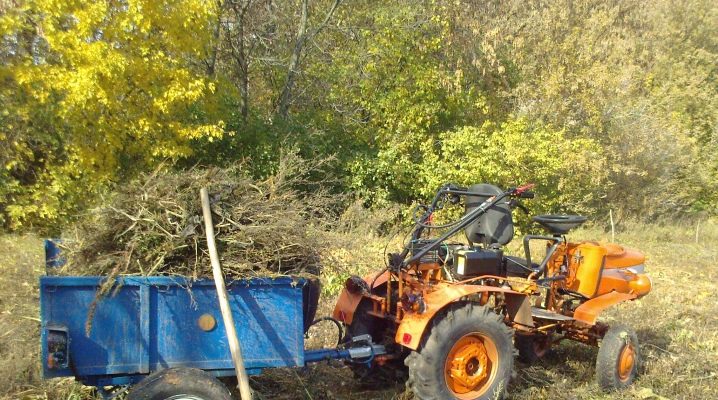
Choosing a walk-behind tractor with a trailer is a very important matter, but this is not enough. It is equally important to understand the legal intricacies and nuances of using such a technique. After all, the rare owner of a "purely agricultural" vehicle is not interested in using it on main roads.
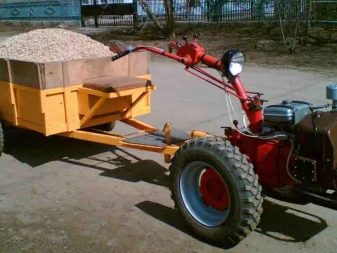
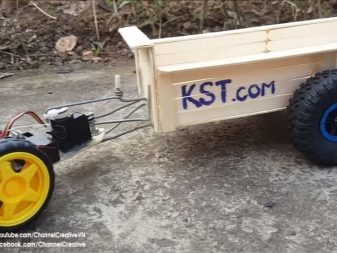
Peculiarities
To find out whether you need a driver's license for a walk-behind tractor or not, you need to answer the main, fundamental question - whether it is a vehicle or not. Motoblocks were created in Switzerland, and in our country they began to be used since the 1980s. years. The main tasks that they solve are:
- sowing field work;
- loosening the soil;
- harvesting cereals and some other manipulations.
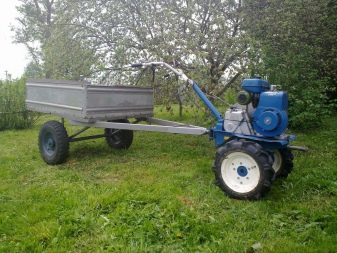
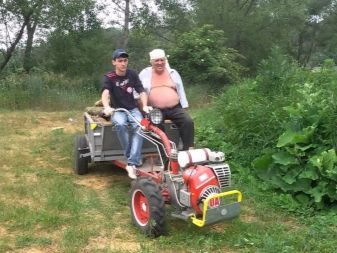
A feature of the walk-behind tractor is slow movement, so it can only handle small areas. Such equipment is not intended for driving on asphalt and concreted, unpaved public roads. According to Russian law, a motorized unit (whether it is supplemented with a trailer or not) is not a legitimate vehicle. In addition to registering with the traffic police, he lacks:
- numbers;
- light and signal headlights;
- light indicator of turns.
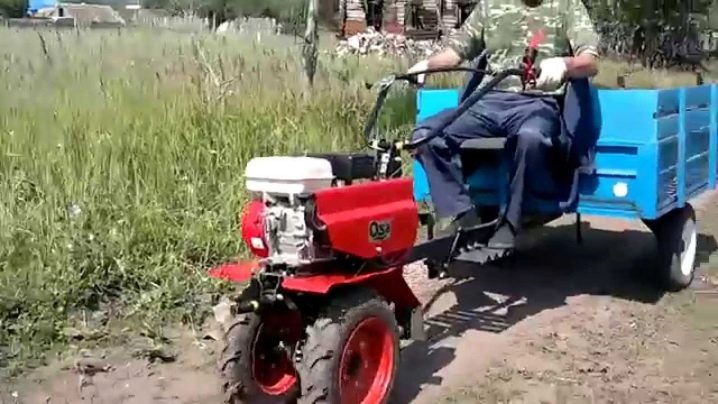
But even the improvement of the design does not mean that you can drive on the road - since homemade vehicles cannot be used in our country. To play it safe, even when driving on the side of the road, you need to have a category A license that allows you to drive a low-power vehicle like a motorcycle, as well as a permit for agricultural management (the procedure for issuing it is much more complicated than obtaining a license). Then it will be possible to travel along free communication routes, heading, for example, to work, or from one field to another.
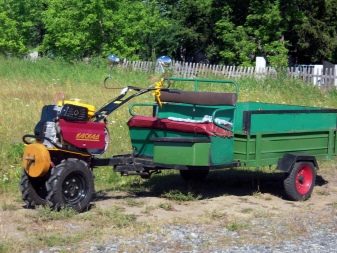
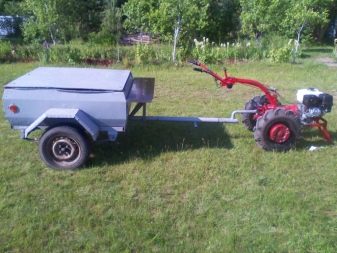
How to choose the right walk-behind tractor with attachments
The fastest apparatus is not always the best for a village or a summer residence, since other characteristics are more valuable for work. Power is key because it determines whether a given piece of land can be cultivated or not. This parameter is consistent with the area of cultivated land, with its hardness. It is far from always advisable to purchase the most powerful device - after all, it will spend more fuel at the same speed than the optimal device. The type of fuel used is equally important.
Gasoline engines:
- relatively quiet;
- optimal for processing small plots of land;
- run without unnecessary problems and are stable in operation.
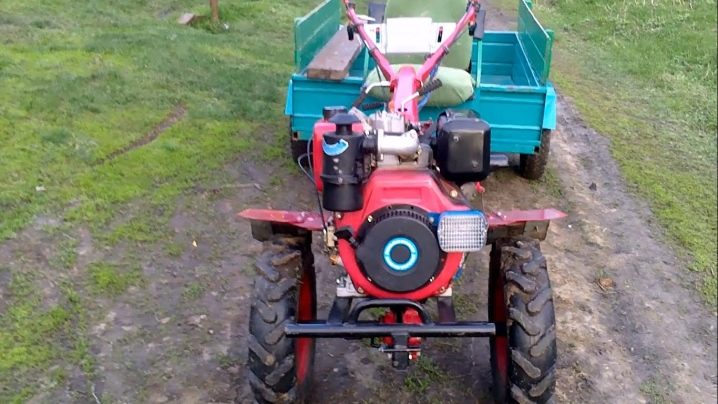
But the larger the area that will have to be processed, the more practical the diesel engine turns out to be. It is much more reliable and wears out less. The mass of the walk-behind tractor is selected according to the complexity of the soil. If it is very difficult to cultivate, extremely light machines are not suitable, they will spend more effort on moving than on cultivation. There is a clear universal rule: the heavier the walk-behind tractor, the better the grip.
Much attention should be paid to the width of the cutter. It must strictly correspond to the aisles dividing the intended rows. Otherwise, either missing areas will remain, or individual plants will suffer. For plowing the land and other types of its processing, the following can be used:
- normal and hilling plow;
- potato digger;
- harrow;
- potato planter;
- mower.
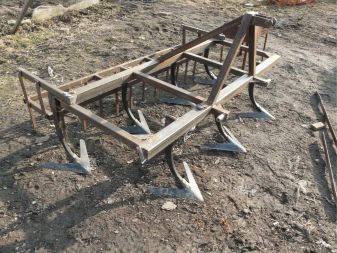
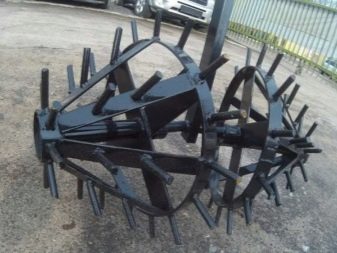
It is very good if the kit includes not a standard plow, but a swivel plow. It allows you to refuse to return to the beginning of the section after passing each row. After plowing, it is imperative to cultivate the land with a harrow to improve the quality of the soil. The disc harrow is much better than the tine type. Single-row hillers with a fixed width are installed on light motoblocks.
The standard delivery set most often includes milling cutters of the universal format. But if the ground is solid and covered with dense thickets, a completely different cutter is needed, which has received the common name "crow's feet". It also helps control soil-infesting pests. It is very good if the walk-behind tractor has a trailer connection.
It makes it easier to transport:
- pet food;
- fertilizers for plants;
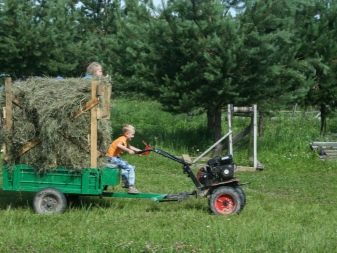
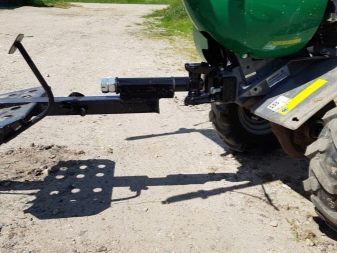
- seed material;
- harvest;
- pesticide;
- priming;
- firewood and coal.
Many farmers prefer motoblocks with a trailer adapter. This additive gives gardening equipment the functionality of a miniature tractor. Adapters equipped with a steering wheel are noticeably more expensive, but the possibilities fully justify such an additional payment. After all, in fact, it turns out also a dump truck and a grader. For summer residents living on the site all year round, snow removal accessories are a useful addition.
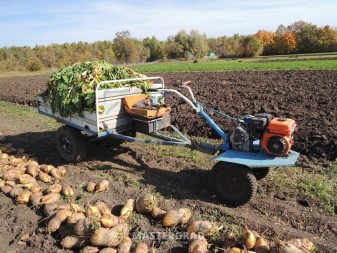
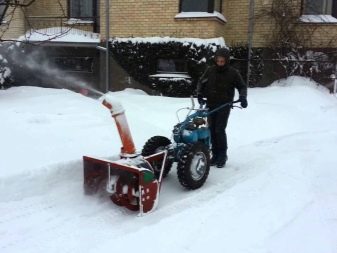
How to use a walk-behind tractor
There are clear rules for the operation of this type of equipment, which are not recommended to be violated. Before starting the device, every time you need to check that everything is connected securely and will not jump to the side. Experienced farmers constantly monitor oil, fuel and refrigerant levels. It is not recommended to squeeze the clutch abruptly.
Be extremely careful when working on slopes. When driving with a trailer, it is necessary to brake only with the help of the built-in mechanisms of the trailer. When turning or starting to move backwards when working in the field, raise any attachment. If the walk-behind tractor pulls to the side, it is necessary to check and pump up the wheels. When this does not work, it is necessary to carry out a full repair.
For information on how to attach a car trailer to a walk-behind tractor, see the next video.



































































The comment was sent successfully.